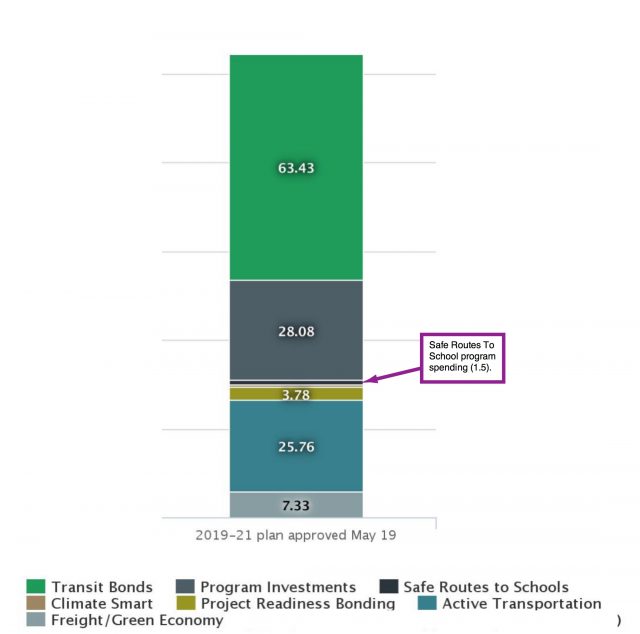(Photo: Thomas Le Ngo)
TriMet’s Westside Express Service commuter rail line, built for the equivalent of $178 million in 2008, is getting some new investment.
The line between Beaverton Transit Center and Wilsonville costs TriMet $135,000 per week to operate and serves something like 900 to 1,000 people per weekday.
That comes out to a cost of $14.83 per boarding in April, compared to $2.68 per boarding of a frequent-service bus line or $2.36 per MAX boarding.
The Oregonian reported Monday that the regional transit agency was agreeing this week to spend another $2 million to buy and retrofit two rail cars from Texas:
The agency cites “expected demands for the growing WES service,” even though ridership on WES has been slipping for the past 2 1/2 years. Weekly trips peaked at 10,700 in October 2013, and the count has held steady just above 9,000 in the last year. The Orange Line, the least busy MAX light-rail line, gives more rides on an average weekday.
TriMet spokeswoman Mary Fetsch said in an email the slump in ridership reflects low gas prices.
“Conversely, when we see high gas prices, we see ridership increase,” Fetsch wrote. “We need to plan for ridership growth.”
In October 2013, when gas cost about $3.75 per gallon, WES ridership topped out at 10,700 boardings per week, the equivalent of 1,070 round trips per weekday. Operating costs that month were $12.16 per boarding-ride — still about five times more than the cost per ride of a frequent-service bus line.
TriMet cut bus service hours 12 percent during the recession, and as of its 2015 fiscal year it hadn’t yet returned regional bus service to 2009 levels. The agency is preparing a series of significant upgrades to bus service, including in the southwestern part of the metro area served by WES, but those aren’t running yet.
TriMet might be right that a WES ridership boom is coming, or that new vehicles will be needed whenever its ridership grows. And even if it were clear to everyone at this point that WES was a bad investment, it’s already been built. So maybe the agency is making the best of a bad situation.
But as the region tries to balance the amount of money it spends on new public transit with other options, WES doesn’t strengthen the argument for rail transit. At least, that’s the position of Keith Liden, a local planning consultant who wrote us Wednesday to bring the Oregonlive article to our attention:
I love the concept behind WES, but it really highlights the problem (again) with how we allocate transportation money. Transit is especially dependent on supporting land use and infrastructure to make it cost-effective. However, too many of the WES stations are not easily accessible by foot or bike, and there’s not enough density/mixed-use nearby. The article suggests to me that TriMet is in denial regarding station area land use and accessibility by talking only about gas prices. It would be better to spend the $1.5 million partnering with station area jurisdictions to address the land use/access deficiencies.
If we made a capital investment in a Springwater Corridor West, instead, we probably would have over 9,000 cyclists per week at greatly reduced cost. Our region needs to spend less time chasing windmills and rainbows and focusing on more basic and cost-effective transportations solutions – one of which is spelled b-i-k-e.
— Michael Andersen, (503) 333-7824 – michael@bikeportland.org
Our work is supported by subscribers. Please become one today.
The post As TriMet puts another $2 million into WES, some imagine the bike trail that wasn’t appeared first on BikePortland.org.
from Front Page – BikePortland.org http://ift.tt/1XzWQB5

No comments:
Post a Comment